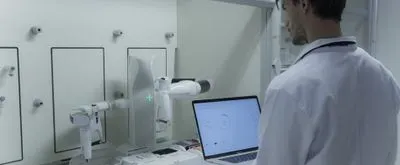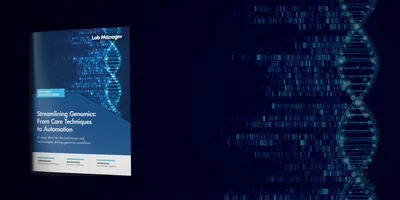Cloud-based software for designing, executing, and sharing protocols can accelerate the process of bringing innovation to market. This novel solution enhances reproducibility, supports increasingly strict regulatory requirements, and can overcome some of the challenges of remote work.
Reproducibility matters
Reproducibility in research provides evidence of correctness, and leads to the generation of reliable knowledge. However, scientists face increased pressure to publish scientific discoveries, file patents, secure funding, and—in the academic realm—achieve tenure, which can pose challenges for reproducibility. Many warn of a “reproducibility crisis” in which laboratories are unable to reproduce their own experiments, as well as those from other laboratories. In some cases, a failure to reproduce initial findings is the result of errors in protocol execution. Software that enables scientists to share accurate, detailed protocols, eliminates many potential errors and enhances reproducibility.
Recreating an experiment often begins with interpreting a manuscript’s “materials and methods” section. Depending on the author and the publication, the level of detail in this section varies greatly between manuscripts. Many subtleties that are overlooked in this section can have a significant impact on experimental outcomes. Further, many manual steps are subject to significant variability between individuals. Pipetting accuracy, for example, varies significantly based on operator technique and experience. Should an error in protocol execution go undetected during peer review, other laboratories can waste valuable resources attempting to reproduce the experiment. This also puts the researcher’s reputation at risk.
In this age of the Internet of Things, sharing protocols electronically can eliminate many sources of error and enhance reproducibility. This approach also facilitates improved method transfer for intra- and inter-laboratory comparison trials (ring trials). Coupling electronic protocols to semi- or fully-automated laboratory technologies can further reduce variability and human error.
Regulated laboratories require compliant solutions
Transitioning to cloud-based technology to design, execute, and share protocols offers numerous benefits for a wide range of industries, including biotechnology and pharmaceutical laboratories. However, these highly regulated laboratories require software solutions that support regulatory compliance.
The Food and Drug Administration’s 21 CFR Part 11 regulations for electronic documentation and electronic signatures establish traceability throughout the documentation process. The guidelines from Part 11 ensure only authorized individuals are able to access electronic records, and that security protocols are in place to preserve the integrity of passwords and login credentials. They also ensure electronic signatures are not copied or transferred between documents, and through audit trail recording, track the creation, modification, or deletion of an electronic record with a time stamp.
A unique advantage of cloud-based software is that it facilitates direct two-way communication with automated instruments and devices to enable remote protocol execution. This two-way communication enables the software to record each step of the protocol as it is carried out, for complete traceability.
Cloud-based software enables remote work
In response to the COVID-19 pandemic, laboratory organizations worldwide quickly pivoted to remote work. However, the urgent need for diagnostics, therapeutics, and vaccines means research and development efforts have to accelerate despite the challenges of working remotely.
Robust automation technology can enhance throughput and reproducibility, and enables laboratories to continue, or accelerate and scale-up critical work. Until recently, there has been a major caveat to automation: creating automated protocols often required in situ laboratory-based programming knowledge. Now, using cloud-based software, users with no prior programming knowledge can easily create and execute a protocol—via intuitive graphical interface—from disparate locations. This cloud-native software solution can also be combined with connected instruments in the laboratory to facilitate fully remote protocol execution.
While automating a single assay or protocol can enhance throughput and reproducibility, a laboratory reaps greater benefits with flexible automation. For example, an average workday may begin with a serial dilution, followed by ELISA sample preparation, and a DNA or RNA extraction protocol in the afternoon. Using a flexible, could-based software, these protocols may be created, managed, and executed remotely via communication with compatible devices such as pipettes, shakers, peltier devices, magnetic bead separators, and vacuum extraction manifolds.
OneLab Software Solution
Following the version 1.11 release, OneLab is a fully compliant, software that can be deployed on a public cloud (SaaS), standalone server, or enterprise solution, that enhances reproducibility, and facilitates remote work. The software enables users to design, execute, and share experimental protocols using a graphical interface that can be executed step-by-step from any PC or tablet. The software eliminates error-prone calculations for serial dilutions and concentration normalizations. The protocols can be executed remotely, via secure communication with the Andrew+ robot, semi-automatically on Pipette+, and with other OneLab compatible devices.
Using OneLab, laboratories are able to share accurate, detailed protocols with others to support reproducibility studies and ring trials, and accelerate time to market. OneLab also acquires data detailing the precise execution of each step of an experiment to ensure a full audit trail for regulated laboratories, and is fully compliant with 21 CFR Part 11. It is the first intuitive, cloud-based software to facilitate efficient, centralized programming of connected pipettes and rapid protocol sharing.
To learn more about OneLab, visit: onelab.andrewalliance.com
To register for a demo of OneLab and Andrew+, visit: www.andrewalliance.com/deminars


